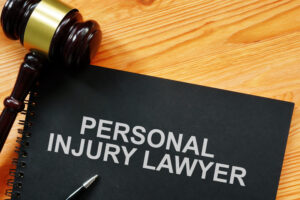People can suffer severe, catastrophic, or even life-threatening injuries in unexpected and preventable accidents. Undoubtedly, they deserve full and fair compensation for their injuries and damages, including pain and suffering. However, how much they can receive for these damages, especially pain and suffering, can depend on many factors. No two cases are identical, and no two victims will receive precisely the same compensation for their pain and suffering.
One of the most significant factors is the quality of their legal representation. If an injury accident victim hires a personal injury lawyer, they are likelier to get what they deserve for their pain and suffering claim. Instead, it takes a skilled attorney to prove pain and suffering, especially when various other factors are present in the case.
What Is Negligence?
In general, negligence is the failure of a person or a party to behave reasonably. Hiring a lawyer is crucial to proving all the elements of negligence.
Someone who is negligent acts in a manner that doesn’t align with how a reasonably prudent person should act. For example, a speeding driver or a truck driver who doesn’t adhere to federal regulations for mandatory rest periods is negligent.
To establish negligence in your injury accident claim, your personal injury lawyer will need to show that:
- The other party owed you a duty of care
- They failed to uphold a duty of care as a reasonable person should
- Their non-adherence to the duty of care caused your injury accident
- You sustained compensable damages, including pain and suffering in the accident they caused
In essence, your personal injury lawyer must show that you are seeking compensation from the right liable party and you suffered compensable damages. Before they can prove that you have pain and suffering damages, they must establish they are holding the right party or parties liable for them. The claim won’t be successful if they aren’t pursuing damages from the correct party and cannot prove legal liability due to negligence o.
What Is Pain and Suffering?
Even if you’ve never sustained a personal injury yourself, you have likely heard the term pain and suffering. Pain and suffering includes a wide range of physical, emotional, and mental suffering that an accident victim must endure due to the accident and their injuries. Pain and suffering generally refer to non-economic damages.
Physical Pain and Suffering
Personal injuries arising from accidents or circumstances due to someone else’s negligence might be extremely painful and last for days, weeks, months, or much longer. Sometimes, the pain from these injuries is ongoing or permanent.
Examples of physical medical conditions that might qualify for pain and suffering compensation include:
- Back and neck pain
- Headaches
- Traumatic brain injury (TBI)
- Broken or fractured bones
- Nerve damage
- Internal organ damage or bleeding
- Dislocated joints
- Pulled or sprained muscles
- Severe burns
- Amputations
- Paralysis
- Loss of a bodily function
Some of these medical conditions may last years or become permanent, leaving the victim in continuous physical pain.
Emotional Pain and Suffering
Emotional pain and suffering after a personal injury might also result in severe mental and psychological distress that can last days or years. Chronic mental anguish following an accident can cause debilitating pain and suffering.
Emotional pain and suffering includes:
- Worry
- Frustration
- Anger
- Grief
- Psychological trauma
- Insomnia
- Fear
- Loss or decreased quality of life
- Cognitive changes after a head or brain injury
- Scarring and disfigurement
- Post-traumatic stress disorder (PTSD)
In fact, the post-accident emotional pain victims suffer after an injury is often severe, leading to lifelong permanent damage. Those with ongoing or permanent physical, emotional, or mental pain typically receive more for their pain and suffering damages than those who simply experience acute pain.
Proving Pain and Suffering Damages
In a personal injury case, the injured party has the burden to prove the facts based on a preponderance of the evidence. You need evidence to prove the facts, including that you have pain and suffering.
 A successful personal injury claim must include several pieces of evidence. Without the right evidence, the injured party or their attorney cannot prove that they have an injury or damages. They also won’t prove that the injury resulted from the other party’s actions or inactions.
A successful personal injury claim must include several pieces of evidence. Without the right evidence, the injured party or their attorney cannot prove that they have an injury or damages. They also won’t prove that the injury resulted from the other party’s actions or inactions.
Cases that don’t include enough relevant evidence result in less compensation than they should or might not even receive a dime. This is one reason why personal injury victims must hire an experienced lawyer to help them with their claims.
A lawyer can help you identify, collect, and preserve crucial pieces of evidence to prove your injuries and damages, including pain and suffering, even evidence that you do not have in your possession.
Physical Evidence
Generally, physical evidence is evidence that people can see and touch. If your case goes to court, physical evidence lets jurors see and observe how your injury occurred and the extent of your injuries. Physical evidence includes tangible and photographic.
Tangible evidence is something that the jury can directly interact with. Jurors can observe evidence such as a tripping hazard, bloody clothing, or injury scars.
Photographic evidence can often serve to preserve evidence you can’t otherwise keep or practically preserve. Video footage also falls under this category. You can capture or obtain photos or videos from the scene of your accident and of your injuries.
Documentary Evidence
Documentary evidence differs from physical evidence but is no less crucial to a personal injury claim. It is any evidence that a court can use in the form of documents.
Instead of showing the physical damage related to the claim, it supports other imperative facts through official documentation. The types of necessary documentary evidence will depend on your claim and your injuries.
Documentary evidence can include:
- A police report if the police were present at the scene of your injury
- Incident reports if your injury took place in a store or on other business property
- Medical records from anywhere you sought care for your injury
- Medical bills you owe because of your injury
- Proof of lost income from your employer
- Your written account of the accident
- Your personal injury journal detailing your injuries, pain, and other ways your injury impacts your life
- Auto repair shop invoices if your vehicle needs repairs
- Any other written records providing proof of your injuries or the damages you suffer because of them
Proving Pain and Suffering With Photos and Videos
Whether you were in a motor vehicle accident, slip and fall accident, experienced a dog bite, sustained an injury from a defective product, or something else, photographic and video evidence can help validate and increase the value of your claim.
Some pieces of evidence will not be available in their present state to show the at-fault party’s insurance company, your attorney, or a jury. Current technology makes it possible to take pictures and videos, no matter where you are, so you can use this convenience to your advantage to help prove your pain and suffering after an injury.
Different accidents require different pictures or videos as evidence. When deciding what to capture, consider what a reasonable individual needs to see to understand your accident and believe your injuries. When you hire a personal injury lawyer, they will help you with this.
Pictures of Your Injuries
No matter the circumstances surrounding your injury, always take pictures of your physical injuries. If possible, take them before and after you receive initial medical treatment. If you have surgery or other procedures to help your injuries heal, take pictures both before and after.
Continue to take pictures every few days or once a week to document your healing. If you suffer any complications during healing, such as an infection, take pictures that show them.
Other Ways to Prove Pain and Suffering
In addition to the above-mentioned evidence, a skilled personal injury lawyer can also use other ways to support your claim for pain and suffering.
You can also prove pain and suffering through:
- The testimony of friends, family, and coworkers who knew you before and after the accident
- Records showing you missed days of work
- Your mental state
- Psychological or psychiatric records
Factors That Affect Pain and Suffering Damages
Whether you have physical or emotional pain and suffering or both, you deserve a fair financial recovery from the party that caused your accident. It’s best to consult with a seasoned personal injury attorney to determine what you can recover, including damages for pain and suffering.
Factors that can increase or decrease how much you can receive include:
- The scope and extent of your physical injuries
- Any lasting psychological injuries you might have
- Evidence in support of your pain and suffering damages, such as medical records
- If you’ll return to work and have regular physical functioning
- Who was at fault for the injury accident
- If the at-fault party is a government entity
- The insurance policies involved and their limits
How Insurers Value Pain and Suffering?
Personal injury lawyers, mediators, and other professional negotiators know that settling involves compromise from both sides. When it comes to personal injury claims, the injured victim has to be willing to negotiate down from their initial demand for compensation. But on the other hand, the insurance adjuster starts their offer low and should be prepared to negotiate to pay more.
As such, most injured victims won’t receive the full amount of their initial demand for pain and suffering. Instead, the demand is simply a starting point for their negotiations. Both sides generally start on opposite ends of the spectrum and negotiate closer to each other as time goes on.
Insurance adjusters typically accept easily demonstrable financial losses such as the expenses of medical treatments. Still, they will fight back against the amount of compensation an injured victim requests for pain and suffering.
Remember that insurance companies want to pay as little as possible on every claim they receive to keep more money in their pockets. The more they pay on claims, the less they have for themselves. They will do whatever they can to avoid paying full and fair compensation, especially for subjective pain and suffering damages.
Adjusters often deny high pain and suffering demands in claims involving:
- Soft tissue injuries: Strains, sprains, and whiplash injuries are challenging to diagnose with an X-ray or CT scan, making adjusters doubtful of claims of pain or mental anguish.
- Low-impact and low-speed car accidents: Adjusters typically argue that you cannot suffer much more than a minor injury in a seemingly minor fender-bender occurring at low speeds. If you didn’t suffer a severe physical injury, you can’t claim pain and suffering damages, in their opinion. However, many people know all too well that serious injuries can result from fender-benders.
- Pre-existing injuries: Adjusters often use prior injuries to further that your pain and suffering did not result from the recent car accident. Instead, they argue any pain you have was due to your previous injury, as they don’t have to pay pain and suffering damages for pre-existing conditions.
- Low or no medical bills: Your claim for pain and suffering won’t go far without actual diagnosed or observable physical injuries. The more medical bills you incur, the better your chances of compensation for pain and suffering.
- Shared liability: Your overall settlement, including pain and suffering, might be reduced if the insurance adjuster argues that you share some of the blame for your injuries.
A Personal Injury Attorney Can Help Prove Pain and Suffering
Preserving evidence is one of the most important tasks when preparing a personal injury claim. The best way to ensure you collect the right evidence that will support your pain and suffering damages is to hire a personal injury lawyer. They will know what evidence you need to prove your pain and suffering.
Most offer free initial consultations and only receive contingency payments. They collect money from you only if they settle or win your case at trial.
Maximize your injury compensation by meeting with an experienced attorney as soon as possible.




















